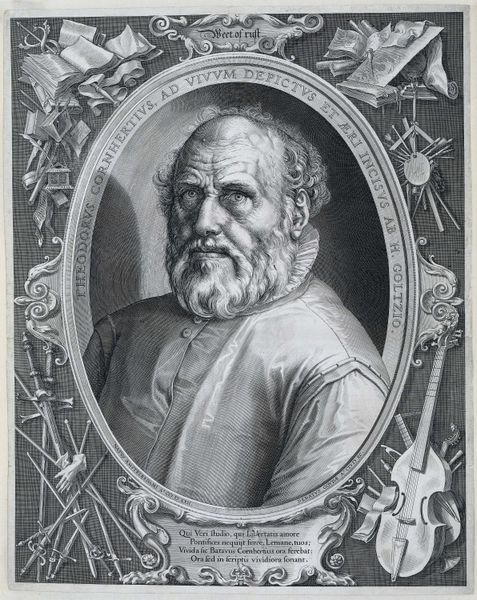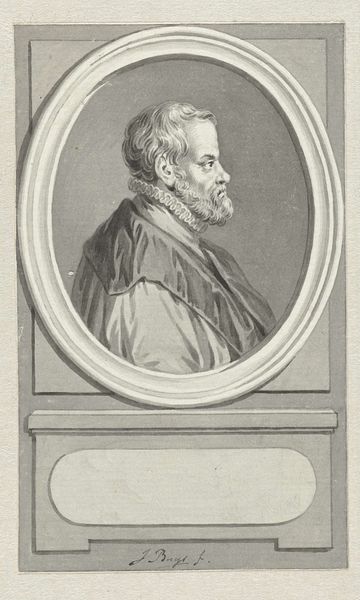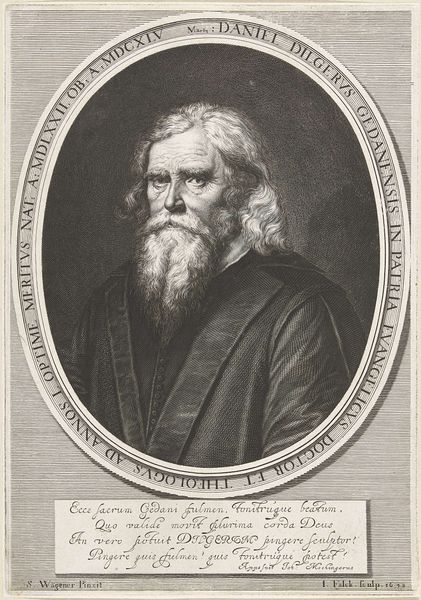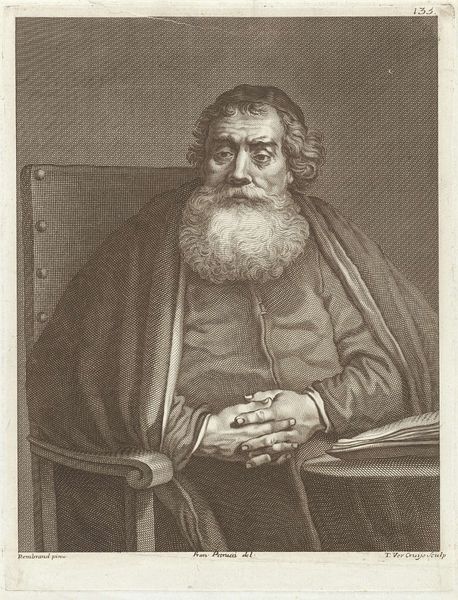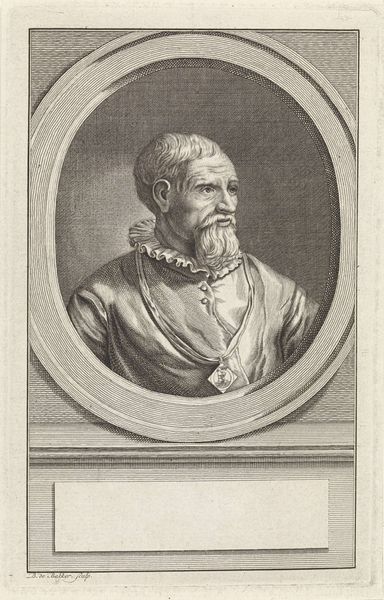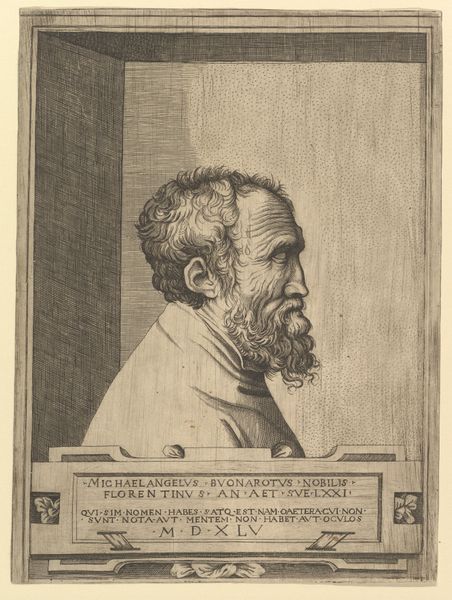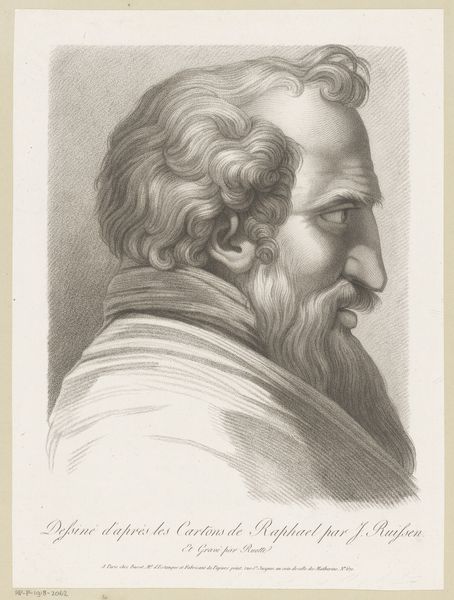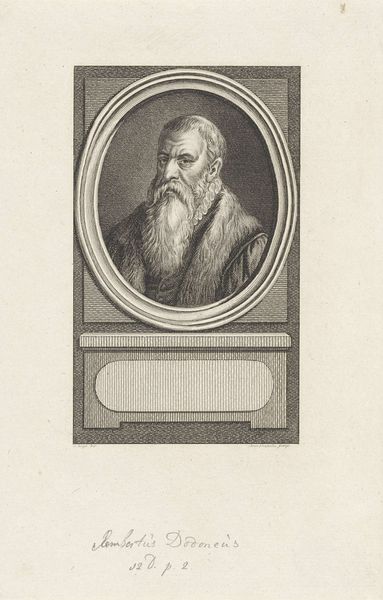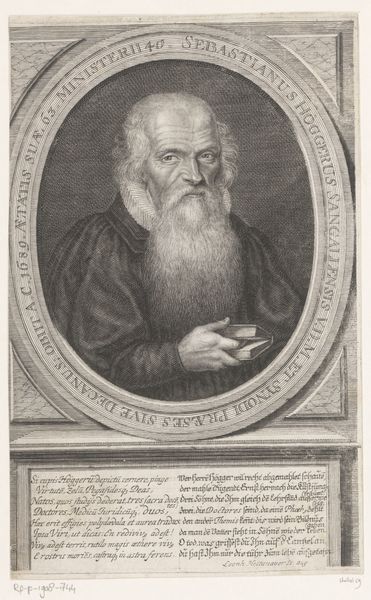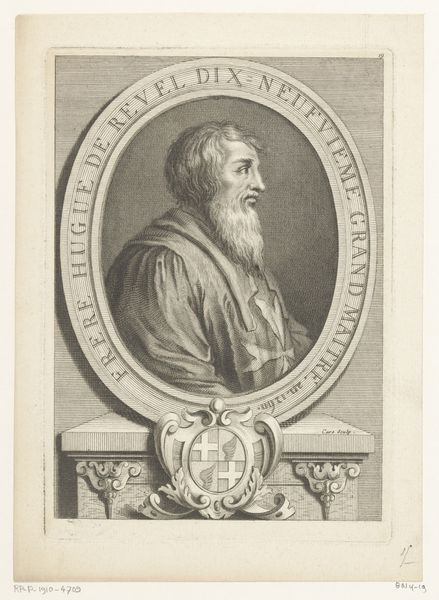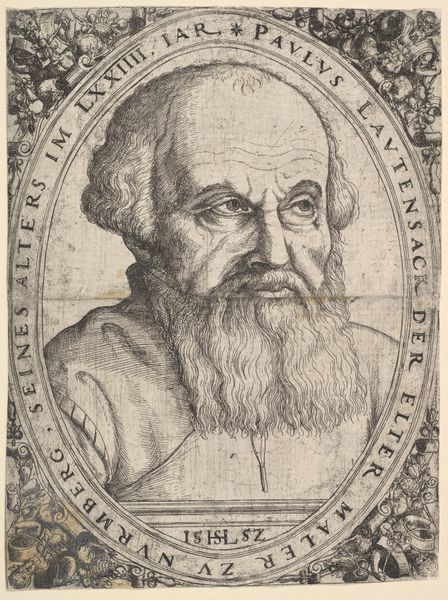
Dirck Volckertsz. Coornhert (1522-1590), Author, Secretary of the City of Haarlem, Printmaker, Goltzius's Teacher 1591
0:00
0:00
drawing, print, paper, engraving
#
portrait
#
drawing
#
baroque
#
dutch-golden-age
# print
#
paper
#
line
#
portrait drawing
#
engraving
Dimensions: 425 × 324 mm (trimmed within platemark)
Copyright: Public Domain
Curator: Goltzius's portrait of Dirck Volckertsz. Coornhert, created in 1591, strikes me with its immediate honesty. There's a kind of quiet strength radiating from it, a lived-in wisdom etched onto the face of the sitter. It is a drawing, or rather an engraving. Editor: Yes, and that face tells a story, doesn't it? Notice the use of line – precise and deliberate, carving out not just form but character. The eyes especially—heavy-lidded, yet sharp and knowing. I feel like he sees right through me. The oval format creates a window onto his soul. Curator: Precisely. And what's so compelling here is that Coornhert himself was quite the Renaissance man, author, politician and an accomplished engraver as well, in fact, Goltzius' teacher. Editor: That teacher-pupil connection adds another layer, doesn’t it? A passing of the torch. Look at how Goltzius renders the light – it's almost sculptural. The face emerges from the darkness with dramatic clarity, creating this powerful sense of presence, reminiscent of the Baroque, despite the early date. It carries the gravity of a life dedicated to thought and craft. Curator: It also embodies ideals about public service and intellectual commitment, key values that we associate with the Dutch Golden Age. These values aren’t expressed overtly, yet they are palpable in the work’s directness. It seems more concerned with capturing a truth, less with presenting an idealized image. Editor: It’s fascinating how the artist uses symbols to convey this deeper meaning, subtly weaving threads of cultural memory. His slightly dishevelled ruff and the mole on his face prevent us from slipping into outright hero-worship, maintaining instead the more tangible image of a human, a philosopher, in thoughtful reverie. What does it reveal to us, this simple study? It seems to propose a type of immortality rooted not in ego but the endurance of ideas. Curator: And a kind of endurance in friendship, as well. To consider the bond between student and teacher, captured in a medium that each obviously understood, adds a special weight. Editor: I agree entirely. It’s like Coornhert lives on, his likeness etched into the copper, multiplied into existence, always with the gaze. A powerful and affecting way to remember someone.
Comments
No comments
Be the first to comment and join the conversation on the ultimate creative platform.
